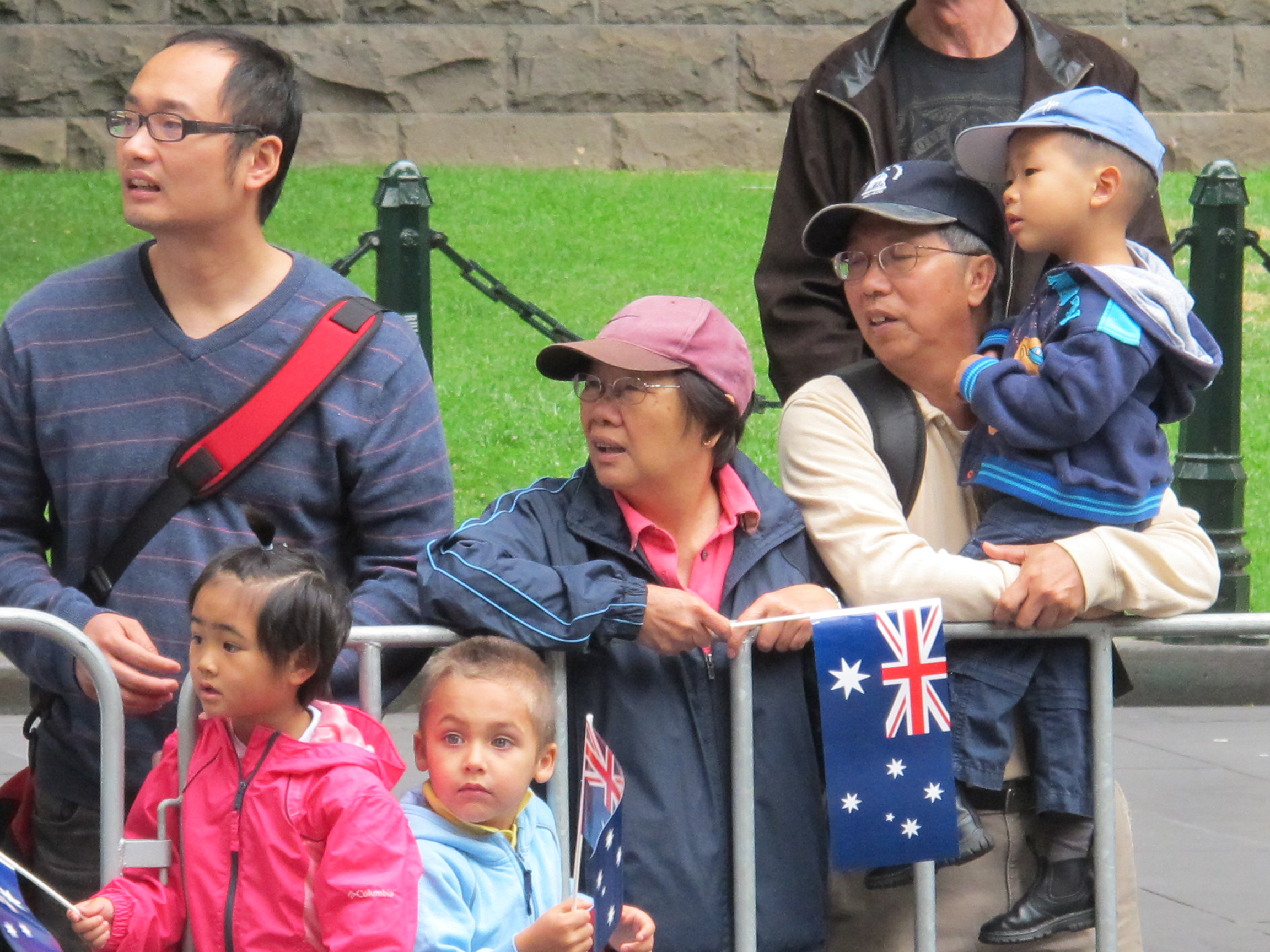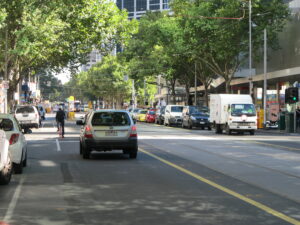
Since we arrived in Australia, we’ve been planning trips to some of the most enticing parts of the country – two trips along the western coast, two up the eastern coast, a long one at the northern end and a visit to Kangaroo Island nearby. In the process, we’ve found ourselves bumping into many more busy periods at these places than we expected.
The main cause the “heaps” of holidays enjoyed by the Aussies – a seemingly endless set. For example, we’re about to enjoy another three day weekend because this Monday – in an occasion that might seem odd to a non-member of the British Commonwealth – is a day off work that honors the Queen’s Birthday. On Saturday, it seemed that all of Melbourne was out celebrating by shopping for sale items at the stores.
So far this year, in addition to QE2’s birthday, we’ve seen Australia Day at the end of January, the four day Easter weekend, and ANZAC Day (like Memorial Day in the U.S.). Strangely, there is a dry spell between early June and Christmas, a gap in holidays you would think unbearable after the bounty of the first half of the year.
But the six states of the country fill a bit of that gap. In New South Wales, for example, Bank Holiday (August) and Labour Day (October) add another pair of three-day weekends. Our favorite in Victoria is Melbourne Cup Day, a holiday in honor of a horserace…well a major horserace. Across the Tasman Sea, Tasmania offers the Royal Hobart Regatta instead of a horserace holiday. There you even get 24 hours off on Eight Hours Day, a Monday that sets up a long weekend as well. That’s Tassie’s Labour Day, honoring the limitation of the basic workday to eight hours. The name is a bit off now, however; strictly it should be “7.6 Hour Day,” the current standard.
It’s relatively easy to plan a trip to avoid even this generous array of holidays, but the real challenge comes from dodging the school holidays, four two-week blocks distributed throughout the year. That’s eight weeks of visits to grandmum and trips to the shore with the children, all of which we must try to avoid. Worse yet, the blocks differ by state. Victorian schoolchildren are off from 29 March to 12 April, for example, while over in Western Australia this first break occurs from 20 April to 5 May. So those eight weeks generate a nightmare for planning to visit different parts of the country. Forget about foreign tourists; the natives are the problem. It’s as if you’re maneuvering around one perpetual non-labor weekend, with flights heavily booked and enticing locations overrun with bleedin’Aussies touring their own state, as well as the others.
It’s no wonder that the word for ‘vacation’ here is ‘holiday’.
You may wonder how the parents can get away for all those holidays. Labour parties have worked on that too. As the Australian Council of Trade Unions puts it, “Australian workers and their unions have fought for and won a range of important leave and holiday entitlements that are among the best in the world.” Plus they’ve fought changes proposed by any rash non-Labour party governments.
As a result, the paid time-off for all working Australians starts at four weeks per year (not counting those 10 public holidays). Better yet, after 10 years with the same company, you’re due another 8.5 weeks per year. And that’s not counting extra days of leave you can accumulate for working a bit longer than 7.6 hours in a day here and there. Or the 10 days for illness or caretaking for the sudden needs of a loved one, nor the block of up to 12 months of unpaid leave you can take for parenting a new child.
All this free time can prove expensive, so it’s a good thing that workers collectively have also ensured good salaries for the least of them. The minimum wage here is over $622 per week, a level which has just been raised more than $15. That’s $16.37 per hour. Of course, prices for everything might be 20 to 30% higher than in the U.S., say, at least so it seems to us. But the lowest paid worker here earns more than double his American counterpart (with about the same tax burden overall). That should give the average worker enough money to cover double the time off, with some money left over for a few more beers at the pub.
Despite all these entitlements, Australia seems to remain a highly productive economy, not just a happy one, especially with the current benefit of a pipeline full of work flowing vigorously due to trade with China and other fast-growing economies of Asia.
It’s all very civilized for a worker here, and certainly enhances the quality of life…unless you’re trying to make a reservation at that beach cottage without carefully checking the holiday calendar ahead of time.






